7 Biggest Mobile Marketing Trends That Will Level Up Your Business

Nearly 4 out of 5 consumers shop using their mobile devices. Can you imagine where your business will be if you can capture even less than a quarter of that population?
Mobile marketing is a catalyst of success for any business today.
As of 2023, a staggering 6.92 billion people — or 85.74 % of the global population — are smartphone users. That population is expected to surge further and reach 7.7 billion by 2027.
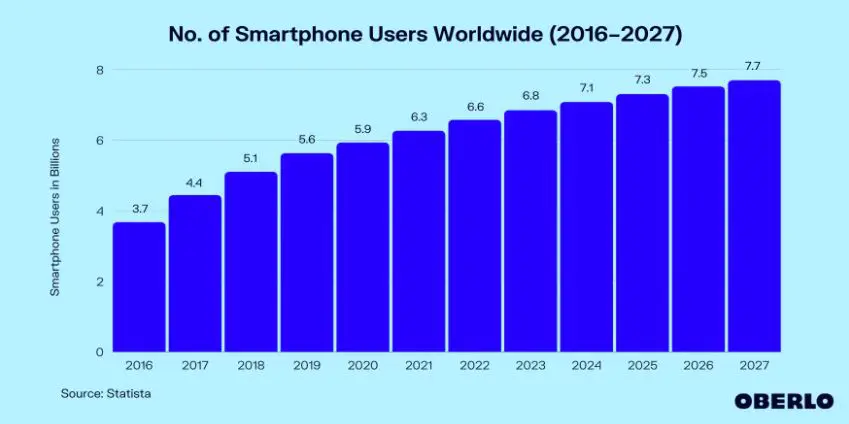
Source: Statista
And as mobile usage continues to increase, so does people’s dependence on the convenience of mobile transactions. In the U.S. alone, 79% of smartphone users shop using their mobile devices.
Savvy mobile marketers and businesses all over the world are taking advantage of this development. According to Statista, global mobile advertising spending is projected to reach nearly $495 billion by 2024.
If you have yet to develop mobile-friendly marketing strategies, now is the time.
Discover some of the top mobile marketing trends that will have a lasting impact on any business. Stay ahead of the curve as you plan your next successful mobile marketing campaigns.
What is mobile marketing?
Mobile marketing is the process of reaching and engaging your target audience via their mobile devices. When crafting an effective mobile marketing strategy, it’s crucial to understand the latest trends to optimize your approach and reach your target audience where they’re most active.
Let’s take a look at some of the biggest developments that have soared in popularity among users.
7 Mobile Marketing Trends That Will Shape 2024 and Beyond
1. Mobile commerce
Mobile commerce or m-commerce involves buying and selling goods and services using mobile devices.
M-commerce transactions often occur on digital shopping platforms like Amazon, eBay, and Shopify, but you can also complete it through social media. This trend is called social commerce, a subset of mobile commerce (more on this below).
Mobile commerce has been around for quite some time but the trend took off during the early months of the COVID-19 pandemic when most physical stores had to close.
But even as the global economy has reopened, mobile commerce continues to gain traction. eMarketer Insider Intelligence projects that 66% of the American population will make at least one purchase using their mobile devices in 2024.
Additionally, mobile device users accounted for about 71% of global retail site traffic and 61% of online shopping orders (as of the second quarter of 2022).
These figures indicate one crucial mobile marketing insight — consumers worldwide have embraced the comfort, convenience, and pleasure of mobile shopping.
Take a look at the following data:
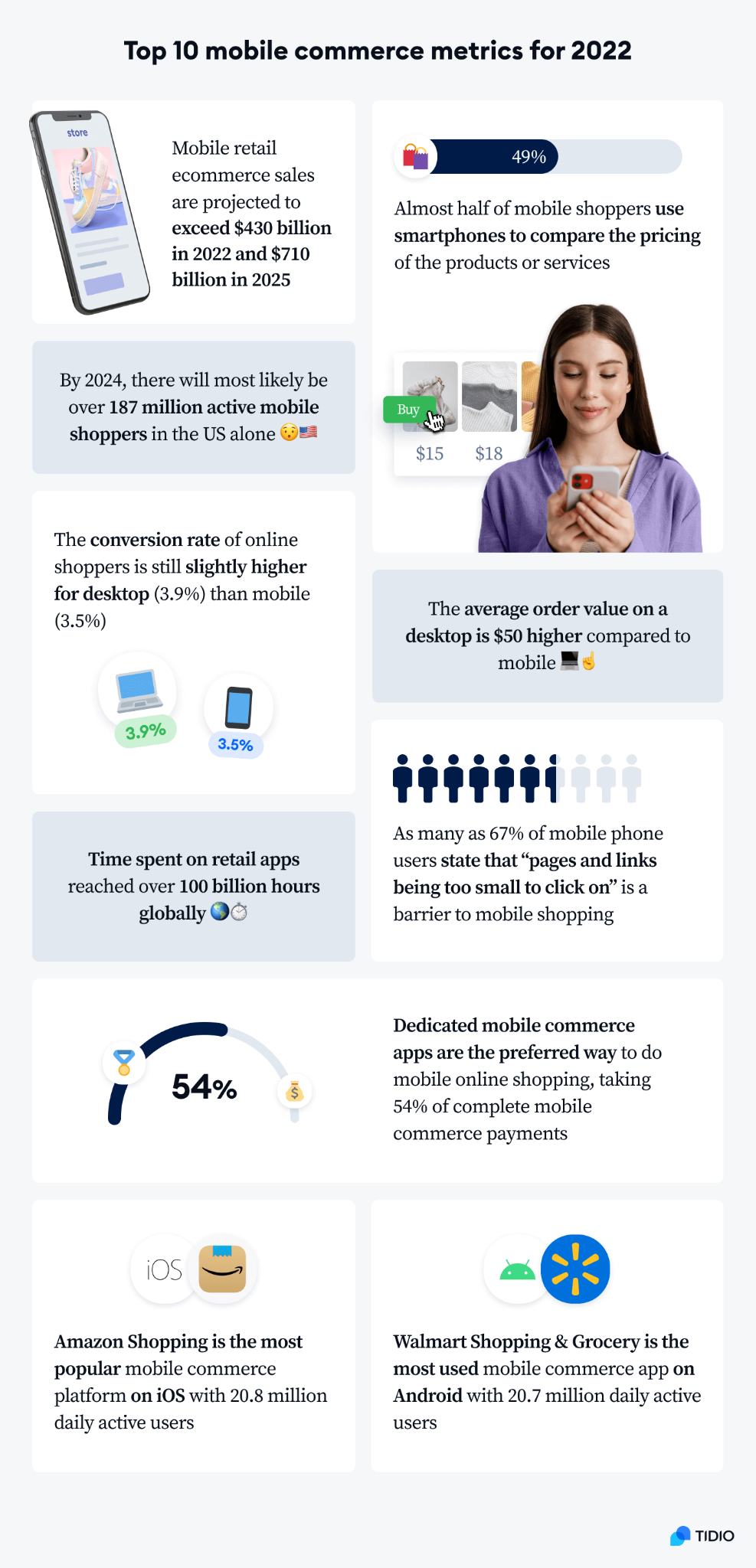
Source: Tidio
So, if you want your business to make an impact, leverage the power of mobile commerce to reach and engage many consumers.
Our team at Appetiser can build you a fully adaptable and scalable custom mobile app to fuel your business’s growth. We’ve done this for numerous partners, including Youfoodz — Australia’s #1 Healthy Food Delivery Service.
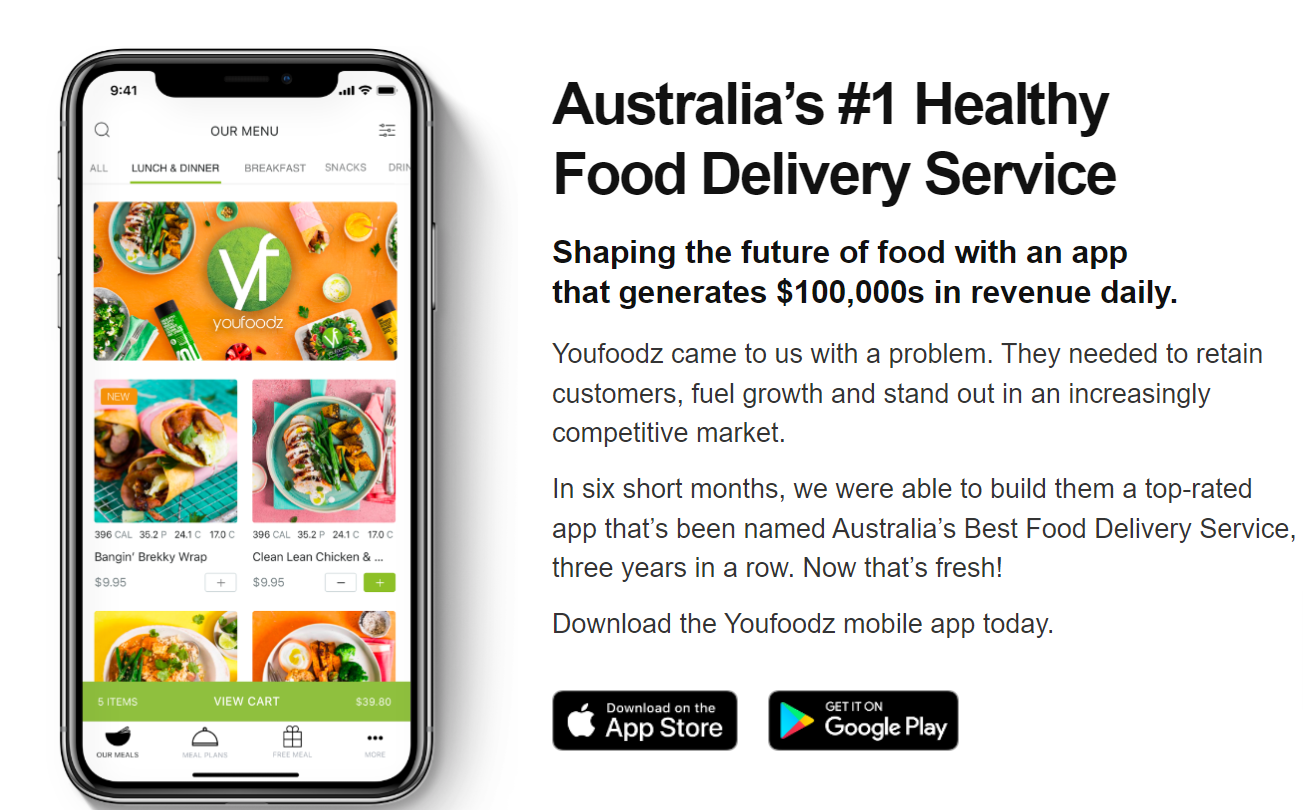
In six short months, we built Youfoodz a top-rated app that drives hundreds of thousands in revenue daily.
Find out how we did it and how we can make the same happen for you by exploring our Youfoodz case study.
2. Social commerce
Social commerce integrates social media and e-commerce. In this strategy, you allow your target market to discover, browse, and purchase your products directly within their favorite social platforms.
Unlike traditional e-commerce, which relies on dedicated websites or mobile apps, social commerce seamlessly blends the shopping experience with the social experience. This creates a more interactive and engaging environment for consumers.
And as I’ve witnessed happen for numerous digital trends: the higher the customer engagement, the higher the growth opportunities.
In 2022, the global social commerce revenue reached an impressive $724 billion. Industry analysts project an even more remarkable growth trajectory, expecting the figure to exceed $8.5 trillion by 2030.
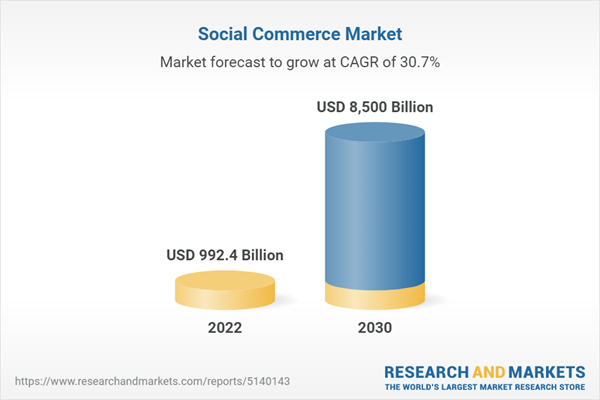
Source: Research and Markets
Considering the widespread use of mobile phones and devices, it is not hard to see why mobile marketers are jumping on this trend. After all, most social media usage occurs on mobile, so it’s just wise to meet consumers where they already spend a significant amount of their online time.
Nike is one brand that has successfully implemented social commerce as a mobile marketing strategy. Through exclusive drops and limited-edition releases, the sports apparel giant encourages user engagement and drives sales directly from their social their channels.
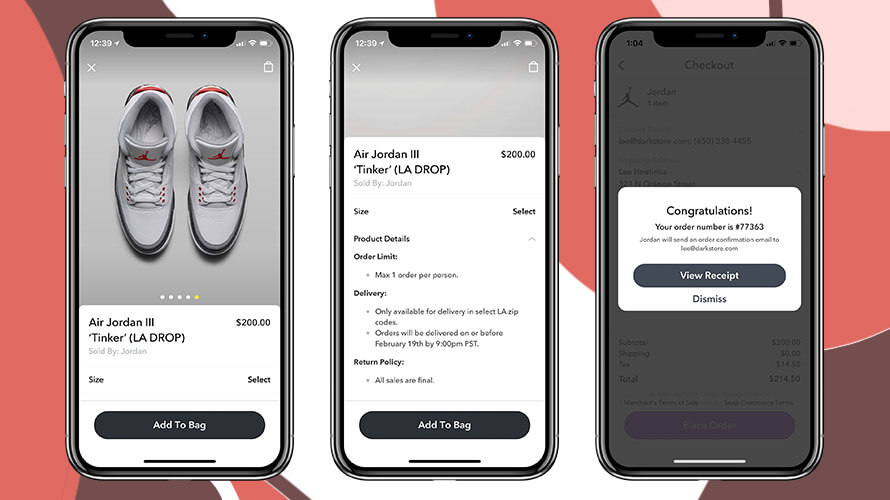
Source: Nike
3. Mobile streaming video content
Over the past few years, there’s been a dramatic shift in the way people consume content. Many are far more likely to watch videos on mobile devices than read texts — spending an average of 17 hours video watching per week. According to a Cisco study, online video streaming and downloads accounted for 82% of internet traffic in 2022.
In 2023, the global digital video viewer count is projected to hit 3.5 billion, with an average weekly online video consumption of 17 hours per person. This underscores a notable trend favoring video content.
There are several reasons behind the rise of this mobile marketing trend, but those that stand out to me are the following:
- First, mobile videos provide a rich, immersive experience that captures users’ attention. With stunning visuals, dynamic sound, and creative storytelling, they offer a captivating viewing experience that keeps users glued to their screens.
- Second, mobile videos are easily shareable. With just a few taps, users can effortlessly spread the content they love to their friends and followers, promoting a sense of interconnectedness in the digital world.
- Third, internet speed and mobile technology have improved significantly and continuously in recent years. Thanks to 5G network technology and more advanced devices, mobile videos now load swiftly — 100x faster than with 4G – and play seamlessly, enhancing the overall user experience.
- Lastly, there’s TikTok. Yes, TikTok! This platform has revolutionized the way we consume mobile videos, offering a unique combination of short-form content and user-generated creativity that has taken the world by storm, redefining the social media landscape in the process.
When it comes to mobile marketing trends, TikTok is a clear winner. The short-form video content app has been downloaded more than 3 billion times and is currently the most downloaded app in the world.
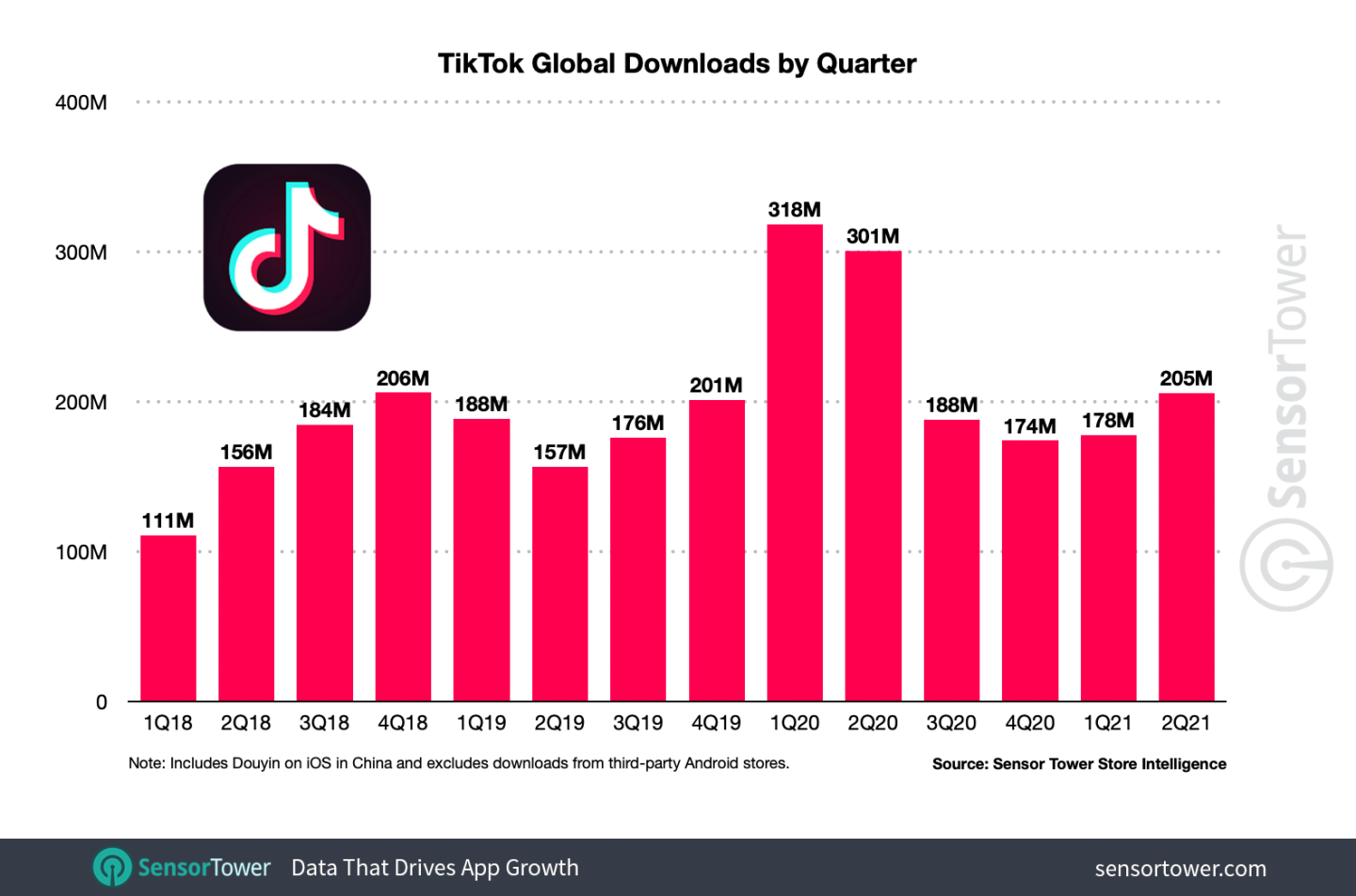
Source: Sensor Tower
Thanks to its algorithm that serves up a never-ending stream of content, TikTok has become so irresistible that it’s poised to become one of the world’s most powerful mobile marketing channels.
Even tech giants like YouTube and Instagram, have followed suit and adopted similar short-form video content strategies. YouTube introduced “YouTube Shorts,” while Instagram launched “Instagram Stories” and “Reels,” catering to this popular trend.
Source: YouTube
But before you think of jumping onto the TikTok bandwagon, let me stress a few crucial points.
As good as TikTok is at driving user engagement, it doesn’t automatically mean that it makes an ideal video content marketing platform for all industries and app genres. TikTok’s visual appeal may attract e-commerce customers, but its campiness may turn off B2B clients.
Of course, there are exemptions to this “rule.” There are prominent B2B brands that utilize TikTok to humanize their offerings, such as Adobe and monday.com. To pull this strategy off, however, requires increased effort and creativity.
When sourcing TikTok content, keep your consumers and business goals in mind. Look for videos that align with your brand identity and messaging.
For example, if you’re targeting young professionals, find content that features users in their 20s or 30s to resonate with your consumers.
Another good way to look at it is to wear the hat of TikTok users. Think about why people use the platform and what they expect to get from it. Then, see if these align with what your target consumers are looking for.
For more helpful tips for promoting your app, check out our article on practical video marketing hacks for small businesses.
4. Augmented reality
Augmented reality (AR) is one of the newest and most exciting mobile marketing trends. The technology allows users to interact with digital content in a real-world environment.
In 2022, the mobile augmented reality market reached a $17 billion valuation and was projected to soar to $36 billion by 2026. The surge is fueled by the rising accessibility of AR technology, offering users immersive experiences.
While AR is still in its early stages, savvy marketers have integrated AR into campaigns, capitalizing on its interactive benefits. One of which is Ikea.
The furniture retail giant has developed an app that allows users to see how furnishings would look in their homes before they buy them.
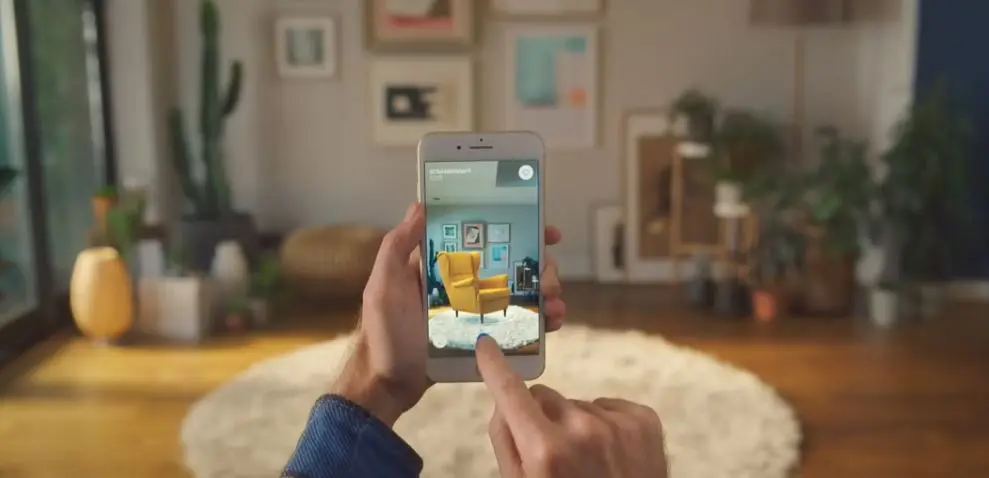
Source: Ikea
Another brand that has used augmented reality as a marketing strategy is Sephora. The personal care and beauty product company has an AR mirror app that lets shoppers try on makeup before making a purchase.
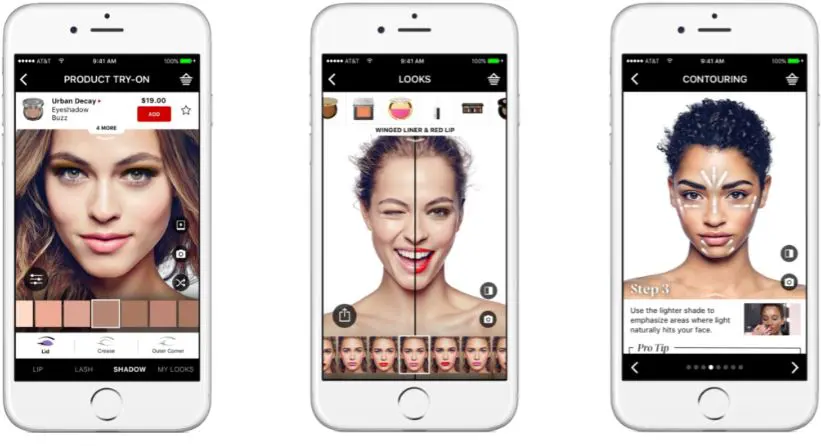
Source: VRScout
Many other brands and industries have adopted AR to improve user experience and customer satisfaction. And with the nearly endless possibilities for mobile marketing with AR, we’ll likely see even more creative and innovative uses for the technology in the future.
![]()
Fun fact: Did you know that the first commercial application of AR was via a print ad?
In 2008, BMW launched a magazine ad with a Mini Cabrio convertible model. When placed in front of a webcam, the ad turns into a 3D computer screen image that moves as you turn the ad around. Pretty cool, isn’t it?
Do you have a groundbreaking mobile app idea, too?
We can help you test the viability of your vision. Our MVP app development solution lets you go from concept to launch quickly without expending your resources.
Check out our article on the benefits of starting lean with MVP app development and how to go about the process.
5. User-generated content (UGC)
User-Generated Content (UGC) is any content created by everyday mobile users rather than businesses, professional marketers, or influencers. It includes anything from photos and videos to reviews and blog posts.
In a world where users are bombarded with commercial messages daily, it’s increasingly difficult for businesses to cut through the noise and reach consumers meaningfully. UGC helps brands connect with their audience on a personal level, especially when it’s collected and shared through a leading UGC platform that makes the whole process effortless.
One notable example of a brand that features UGC is Lego.
In the LEGO Ideas platform, fans can submit their own creations for consideration as official LEGO sets. Users design and share their models, and if a project receives enough community support, it has the chance to be reviewed by LEGO for potential production.

Source: Lego
I find this strategy brilliant as not only taps into the immense creativity of LEGO enthusiasts but also empowers them to actively contribute to the product lineup.
Unlike traditional marketing strategies, UGC is created by regular people, and most mobile users find them more relatable, authentic, and trustworthy. This is among the reasons why brands flock to TikTok.
In TikTok, everyone can be a content creator, making it an effective platform to source user-generated content and connect with potential customers.
According to research, about 90% of consumers say UGC holds more influence over their buying decisions than promotional emails and search engine results. Another study found that 70% of shoppers read one to six reviews before making a purchase.
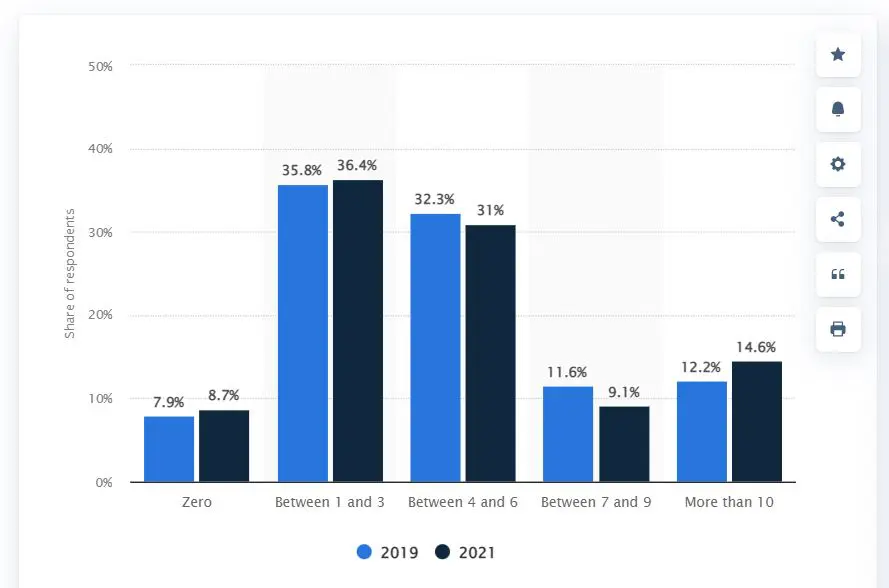
Source: Statista
These figures indicate that mobile businesses that effectively leverage UGC will be in a strong position to succeed in the coming years.
6. Personalization
In the early days of mobile marketing, businesses would simply send out mass texts or put up a generic mobile website and call it a day.
But as mobile usage has continued to grow, consumers have become more savvy and demanding — expecting personalized experiences tailored to their specific needs.
This expectation will likely remain high in the coming years as the global consumer population is expected to have more digital natives.
I’m talking about Generation Z (Gen Z) or those who have grown up with constant access to the internet and mobile devices.
As of 2020, Gen Z consumers already accounted for 40% of global consumers and are expected to make up more than 41 million U.S. digital buyers by the end of 2023.
These consumers seek authentic, personalized experiences that align with their individual values, preferences, and interests.
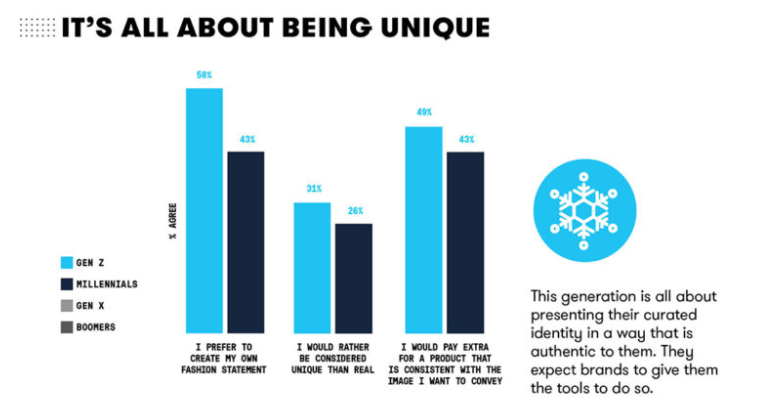
Source: PushPushGo
How do you personalize your mobile marketing efforts?
Here are some tips that have worked well in helping our Appetiser clients have more authority:
- Creating a customer persona and mapping out the buyer’s journey
- Providing purchase recommendations based on past preferences
- Using chatbots and other AI-powered tools to deliver more tailored content
- Showing targeted in-app ads and push notifications based on mobile user behavior
7. Mobile games as social networks
Mobile gaming has come a long way since the early days of mobile devices. Today, mobile games are enjoyed by more than 2.2 billion people worldwide and are becoming increasingly social.
How do mobile games become more social?
Mobile games incorporate features that facilitate player interaction during gameplay, from in-game messaging and social media integration to the ability to create communities or guilds. These elements not only enrich the gaming experience but also cultivate a sense of community, elevate user engagement, and enhance both ad revenue and return on ad spend (ROAS).
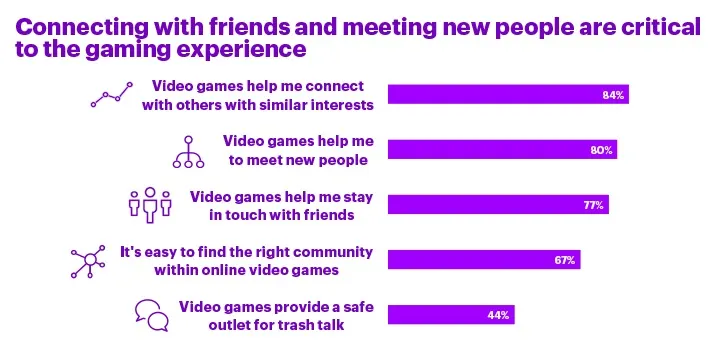
Source: Accenture
Another significant driver I see for the rise of the trend is the wide-scale adoption of 5G networks and cloud data. These two technological advancements have made playing mobile games more immersive, with less lag and better synchronization and interaction for multiple gamers in different locations.
One game that has successfully incorporated social features into its mechanics is Roblox.
![]()
Source: Roblox
The platform empowers players to become creators, allowing them to design their own games and share them with the broader community. This collaborative aspect encourages social interaction, as players often collaborate, offer feedback, and even participate in each other’s creations.
The mobile gaming market is expected to grow from USD 100.54 billion in 2024 to USD 164.81 billion by 2029.
Unsurprisingly, many savvy businesses are looking for ways to cash in on this rapidly growing industry. According to Allied Market Research, the global in-game advertising market value is poised to reach $17.6 billion by 2030.
Considering how sophisticated and engaging mobile games are becoming year after year, I won’t be surprised if more marketers and businesses will tap into the potential of the mobile gaming market in the coming years.
People also ask about mobile marketing updates
The mobile marketing industry is always changing, thus, new things pop up, and I prepared this section for quick answers to the questions everyone’s asking.
1. What is the future of mobile marketing?
Mobile marketing is constantly changing. Right now, it’s all about connecting with people through videos and working with creators who know how to grab attention. What matters most is building trust and making sure your content truly helps or entertains users. All signs point to mobile becoming even more personal and interactive in the future.
2. What are some marketing trends right now?
Short videos, creator partnerships, and shopping from your phone are everywhere. Brands are focusing more on what people actually want to see, and tweaking their messaging to match real-time feedback. Marketing isn’t just about selling—it’s about starting conversations and sparking ideas.
3. How is mobile commerce changing business growth?
Shopping on your phone is now the norm. It’s so easy to browse and buy that businesses are seeing faster growth simply by making the process smoother. Little things like personalized suggestions and quick checkout options help turn interest into sales before you know it.
4. What is social commerce and why does it matter for mobile marketing?
Social commerce is about turning your favorite social apps into shopping platforms. Whether it’s a friend’s recommendation or a product tag on a video, people are buying directly from places where they spend most of their time. It feels natural and makes shopping more social and fun.
5. How can businesses use mobile video content to improve marketing?
Quick, punchy videos work wonders. Think product demos, tips, or behind-the-scenes glimpses. The goal isn’t just to advertise, but to share moments that make people want to tune in, engage, or share with their friends.
6. Why is personalization important for mobile marketing strategy?
People want things that speak to them personally. If your content feels like it’s made for them, they’ll listen. Brands are building loyalty and getting results by figuring out what matters to each user and tailoring messages or offers that actually fit.
7. How is mobile marketing evolving today?
Marketing via mobile has become all about real conversations and meaningful experiences. The smartest campaigns feel less like ads and more like helpful tips from a friend; they’re relevant, timely, and part of people’s everyday routines.
The future of marketing is mobile
It’s time to face the fact: app marketing is going mobile. In an increasingly mobile-centric future, a well-crafted mobile marketing strategy is vital for your brand’s success.
Keep the above trends in mind as you plan your campaigns to enhance user engagement, boost conversion rates, and gain an overall competitive edge.
But if you’re yet to establish a mobile presence, now is the time. Schedule a free consultation with our app developers and take advantage of the opportunities that come with this exciting new era in business and marketing.

Jane Eslabra has 14+ years of experience producing content across traditional and digital platforms. She channels her strong passion for fostering tech startup growth through knowledge sharing.


